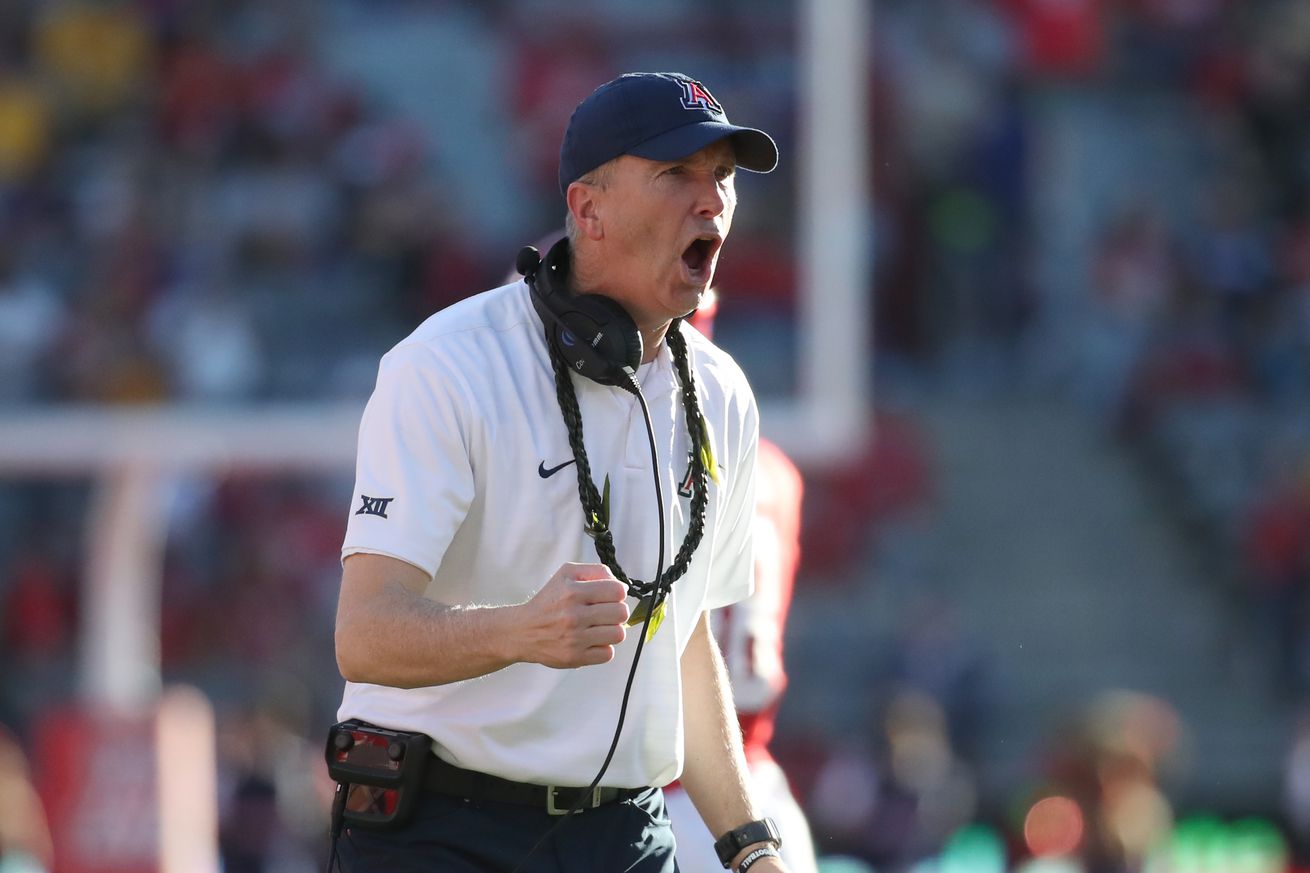
The offseason is here, with all of Arizona’s sports done for 2024-25 season and the 2025-26 campaigns still a little ways away.
Which makes this a great time to step back and see how all of the Wildcats’ programs are doing and how they’ve handled the move from the Pac-12 to the Big 12
Over the next few weeks we’ll take a look at each of the UA’s men’s and women’s athletic programs to see what shape they’re in and what prospects they have for the near future. We’ll break down each team and evaluate how it is performing under its current coaching staff, looking at the state of the program before he/she arrived and comparing it to now while also evaluating how that program fits into its new conference.
Next up: Brent Brennan’s football team
How it looked before
The 3-year Jedd Fisch era began as close to the bottom as a program can be, losers of 12 straight including a 70-7 beatdown at home at the hands of rival ASU. That losing streak extended to 20 before Arizona finally broke through and went 1-11 that season, but a year later the record was 5-7 and in 2023 the Wildcats posted just the fourth 10-win season in school history.
And just like that Fisch was gone, bolting to Washington less than a month after leading the UA to an Alamo Bowl victory and taking several player with him. Arizona found itself with an unexpected opening in mid-January, at the tail end of the coaching carousel, and that triggered another portal window for just its roster.
Brennan was hired within days of Fisch’s departure and, after quickly assembling a staff, his first order of business was trying to hold together as much of the team he inherited before there was any opportunity to address needs. The result was a very chicken-with-its-head-cut-off offseason, which did end up bleeding into his first season on the job.
Where things stand now
Arizona had a major regression in Brennan’s first season, dropping to 4-8 and winning only two conference games. The Wildcats began 3-1, winning at Utah in their Big 12 debut, but it was almost all bad after that. That was despite bringing back arguably the best quarterback-receiver duo in the country in Noah Fifita and Tetairoa McMillan.
T-Mac had another great year, setting the school career record for receiving yards en route to being a Biletnikoff Award finalist and a 1st round pick in the 2025 NFL Draft. But almost everyone else who was back from 2024 had a worse season, as Fifita’s completion percentage dropped and his interceptions jumped, and as time went on (and injuries popped up on defense) it was very evident that the inability to fill holes during the offseason kept this team from success.
Calls for Brennan to be fired after—even during—his first year were loud, but athletic director Desiree Reed-Francois stayed committed to a coach that was hired just a few weeks before her. Brennan made changes to all three coordinator positions, hiring Seth Doege to coach the offense and Craig Naivar to run special teams while elevating Danny Gonzales to defensive coordinator.
Big 12 vs. Pac-12
Arizona’s first season in the Big 12 saw it face several teams it hadn’t played in a while, or at all, going 2-7 with the wins at Utah and at home against Houston. Most of the losses were fairly uncompetitive, a mix of offensive inefficiency and the defense depleted by injuries leading to six games decided by 20-plus points.
With a 9-game schedule and a 16-team league, the Wildcats only see 60 percent of their Big 12 opponents each season and in 2024 that meant taking on three of the four that tied for first place. They play all four this season and will play six of the league’s nine bowl qualifiers from a year ago.
The travel component of this bigger league has very little impact on football, which only plays once per week and charters to games. The exception may have been leaving on a Thursday to fly to Orlando for the UCF game but that pales in comparison to what other UA sports dealt with in Big 12 play.
One big question
How short is Brennan’s leash? The unique circumstances of his hire, despite the amount of talent he inherited, likely factored in Reed-Francois’ choice not to make a change after one season. The transfer portal makes it possible to turn things around quickly—just look at ASU—and if the Wildcats hit on the majority of their offseason acquisitions this fall could be surprisingly competitive.
But if there’s no improvement from 2024, or not enough, does the plug get pulled? And would that happen during the season, in hopes of getting a head start on finding a replacement?
John Mackovic and Kevin Sumlin both made it into their third seasons despite regressing in the first two (and from their predecessors) but this is a different era and patience is no longer a virtue.